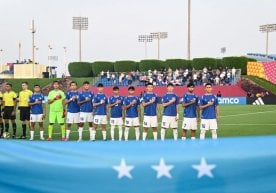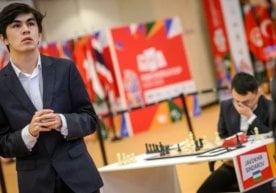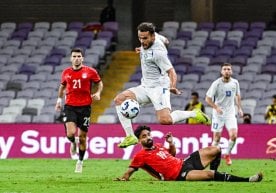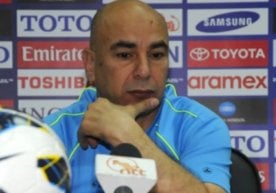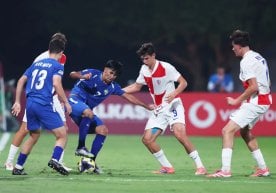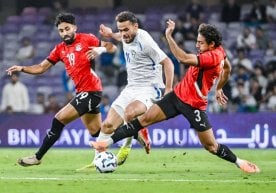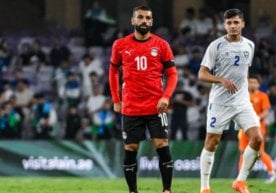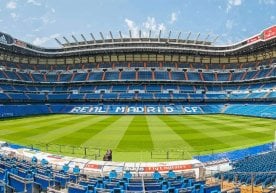
Fabio Cannavaro went through his first serious trial as a national team coach. True, Uruguay is also a strong opponent, but at that time, the team didn't have such an optimal squad. Cannavaro himself didn't have time to get acquainted with the team yet. This is evidenced by the fact that five players have changed compared to the last game. Now we have the opportunity to partially evaluate the coach's performance over a month. What has Fabio Cannavaro done in the past? What changes are being implemented? We will discuss this below.
3-4-3 - IS THIS THE KEY TO SUCCESS?
Recently, guest on a podcast, Ole Gunnar Solskjaer, commenting on today's "Manchester United" system, namely 3-4-3, admitted that it's very difficult to play against such a scheme.
"If everything is put in perfect form, it will be difficult to both press and defend against such a team," the Norwegian specialist said.
True, it's also said that it's impossible to achieve success in top clubs this way; we're used to the world's best teams playing with four defenders. But if you notice, in many teams that showed football above their level with a more modest squad, and were able to play well against more famous opponents through tactics, there was a three-centre defender scheme. Remember the national teams of Denmark, Austria, or Switzerland in recent European championships. You won't find top-ranked stars in these teams, but they always demonstrate proactive football, and those average players also become stars within this system.
In the image below, you can see the aspect that Solskjaer mentioned, namely the difficulty of defending against such a system.
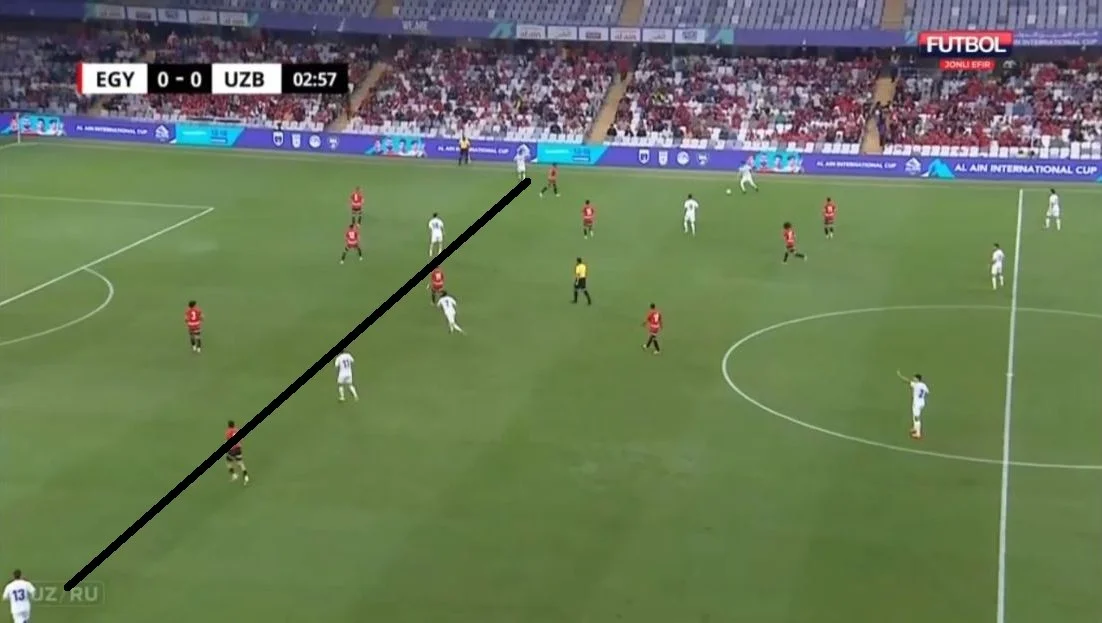
When the wing-backs actively join the attack, 5 players form in a single line in front. In the 4-3-3 or 4-4-2 section, that is, when playing with wingers, it is difficult to create such a structure. This, in turn, creates difficulties for the opponent's four defenders. There is always an opportunity to have one free player on the far wing or to have wider zones in the center due to the horizontal "spreading" of the opponent's players.
In a recent match against Manchester United, when Chelsea was left in a minority, Maresca was forced to field a fifth defender, and at the post-match press conference, he said he needed an additional player because the opponents were attacking with five men on the front line. The "Sunderland" coach made the same decision in the game against "MU" - he didn't hide that even though the score was 0:2, he was forced to substitute a third central defender, fearing that otherwise the score would get even bigger.
At the same time, it is difficult for the opponent to press against three central defenders. Because 5 defenders allow the team to position themselves broadly across the horizon. Covering the entire width of the field on the front line creates the need to attract a large number of players. In turn, this creates opportunities for quick passes or long-distance passes through the center.
The main achievement of the Uzbekistan national team at the moment is that it has been playing in this system for many years. Katanec developed the basic settings of this system, developing the players' skills for such a game. Health problems may have prevented the coach from moving to the next stage and further developing within this system. That's why in the final qualifying round, the team felt stuck in the same style and same lineup.
Although Temur Kapadze arrived for a short time, he managed to give the system the necessary impetus - for example, some changes were made to the wing-backs' style, and attacking skills were increased. Naturally, in any team, new settings, additional ideas help as a positive impulse.
The most important thing is that Fabio Cannavaro has followed the same path and is creating lines to adapt to the opponent, create advantages, in short, carrying out final finishing work under this very scheme. Although we are running the cycle under three coaches, the main achievement could be that the team is moving in the same direction.
ADAPTIVITY
When Fabio Cannavaro was introduced as head coach, the main question was: what kind of coach is he? Will they follow the path of our previous coaches or will they change everything? What kind of football does he play?
A few matches in a very short period of time have shown that Cannavaro is sufficiently flexible, demonstrating football based on the players - a key aspect needed by national team coaches. Perhaps that's why we couldn't gather information about his main playing style.
So, what is Fabio Cannavaro bringing to our game?
Although he didn't work successfully as a coach, it's a surprise to us that he was always in search and kept up with modern trends. Unlike a number of other coaches who have worked successfully in their time and are trying to do something in Asia with the same baggage, it's not hard to notice that Fabio is trying to grow with the team.
For example, the "struggle for second balls" has become a trend in football, and the advantage in this area is also influencing the game's advantage. In the early games, we thought Cannavaro preferred long passes, but by the third game, it became clear that this wasn't just a cautious playing style, but one of the additional tools.
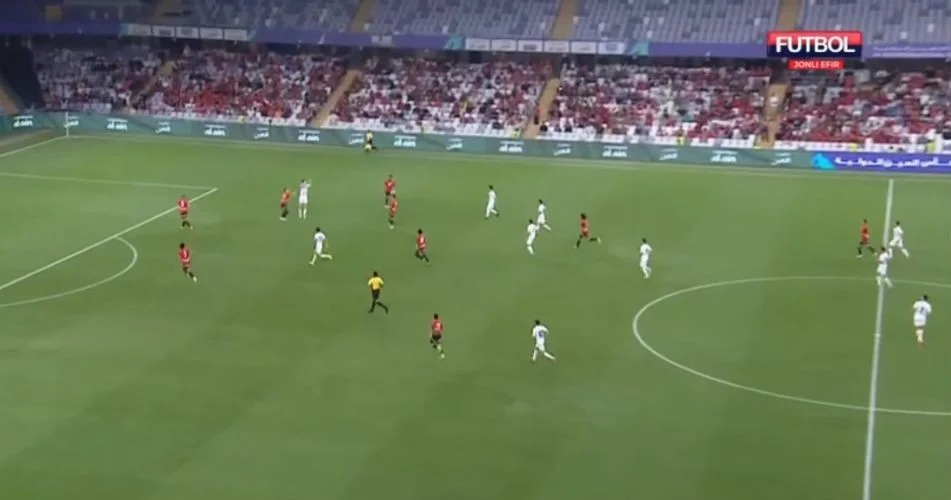
Look at the picture above. When the ball is passed from above, Shomurodov may not have the opportunity to control it, but there are 4 more Uzbek players in the zone where the ball can fall. In such situations, possession of the ball, firstly, allows for a quick attack, and secondly, the defense structure is disrupted because the opponent is focused on the ball coming from above, and it's difficult to predict its location in a second.
The second goal, scored by Oston Urunov, came in this way. In the center of the field, Eldor Shomurodov won the fight in the upper floor and delivered the ball back to Shukurov, who was well aware of the situation on the field. Shukurov immediately put Oston in a one-on-one situation with the goalkeeper. That is, here it can be noted that the opponent was distracted by chaos, while Eldor noticed Shukurov in a better position, Shukurov noticed Oston, and Urunov moved forward, sensing that he would make a quick pass in that situation. At that time, all three of our players, unlike the Egyptians, knew exactly what to do - this is what is called controlled chaos.
Another change compared to the previous team is that Cannavaro is juggling with different tempos in one game. That is, during Catanes's time, the team was cautious - this was noticeable regardless of who the opponent was. When a goal was needed, often the whole scheme changed, new players appeared. Kapadze's football is a bit more aggressive, more active in attack, which exhausted the team when pragmatic play was needed. The match against the UAE is a clear example of this.
Cannavaro, on the other hand, manages to offer the same tempo with the same players - sometimes defensive, sometimes aggressive, sometimes high, and sometimes lower. Looking at the team's current performances, it's very difficult to say whether they're attacking or defensive. In the match against Egypt, even against Uruguay, we sometimes managed to press much higher.
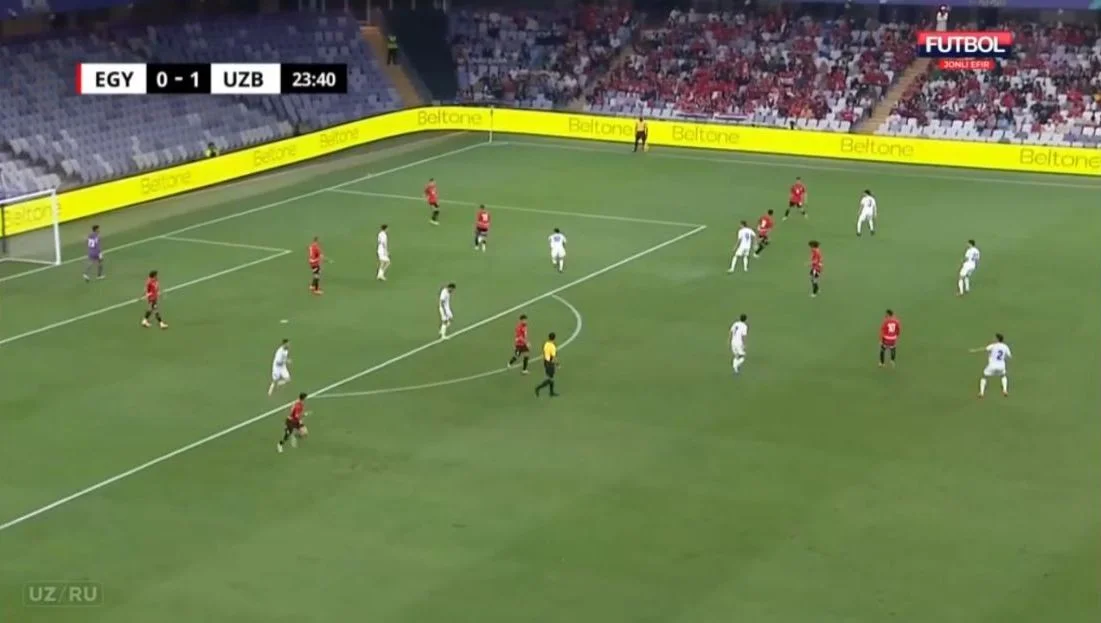
After the score was opened, for 10-15 minutes, until Urunov aimed at the crossbar, Egypt showed serious activity, almost locking the opponent in the penalty area. Now pay attention to the counter-pressing above. Nine of our national team players were near the opponent's penalty area - after losing the ball, we quickly tried to get it back, and we succeeded. That is, instead of fearing a strong opponent and lying down as a whole team, we are managing to set our own style and show that we are not a small team. After such situations, self-confidence and relief disappeared in Egypt.
Here's the account opening situation:
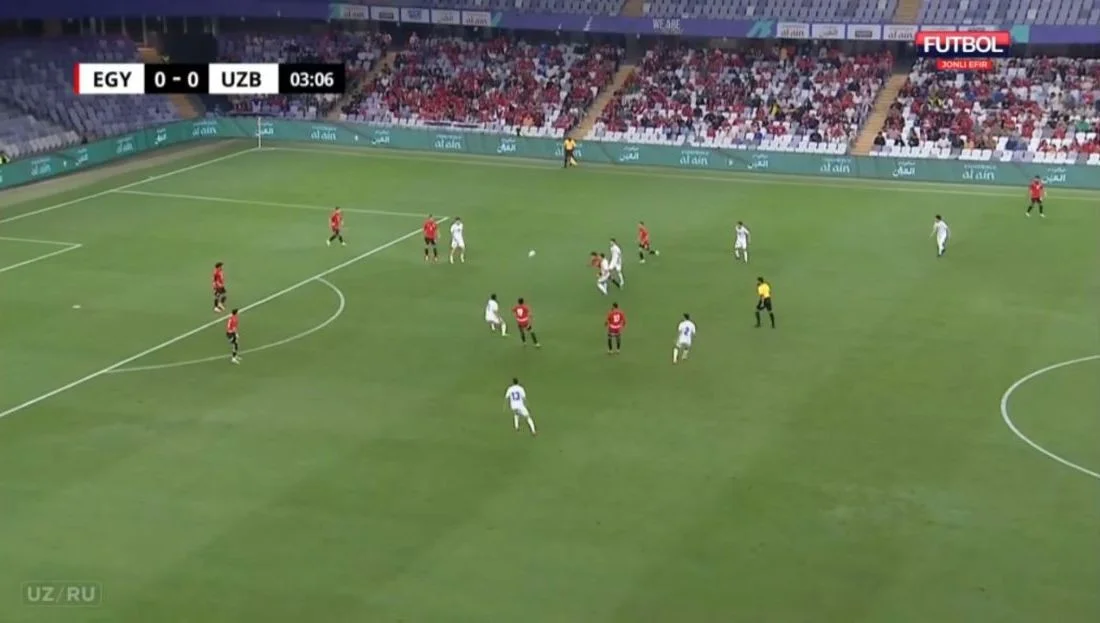
At first glance, the goal came as a result of Oston's individual skill, bypassing several players. However, we shouldn't forget that the situation actually arose from the activity at the beginning of the game, from the pressing of 8 players.
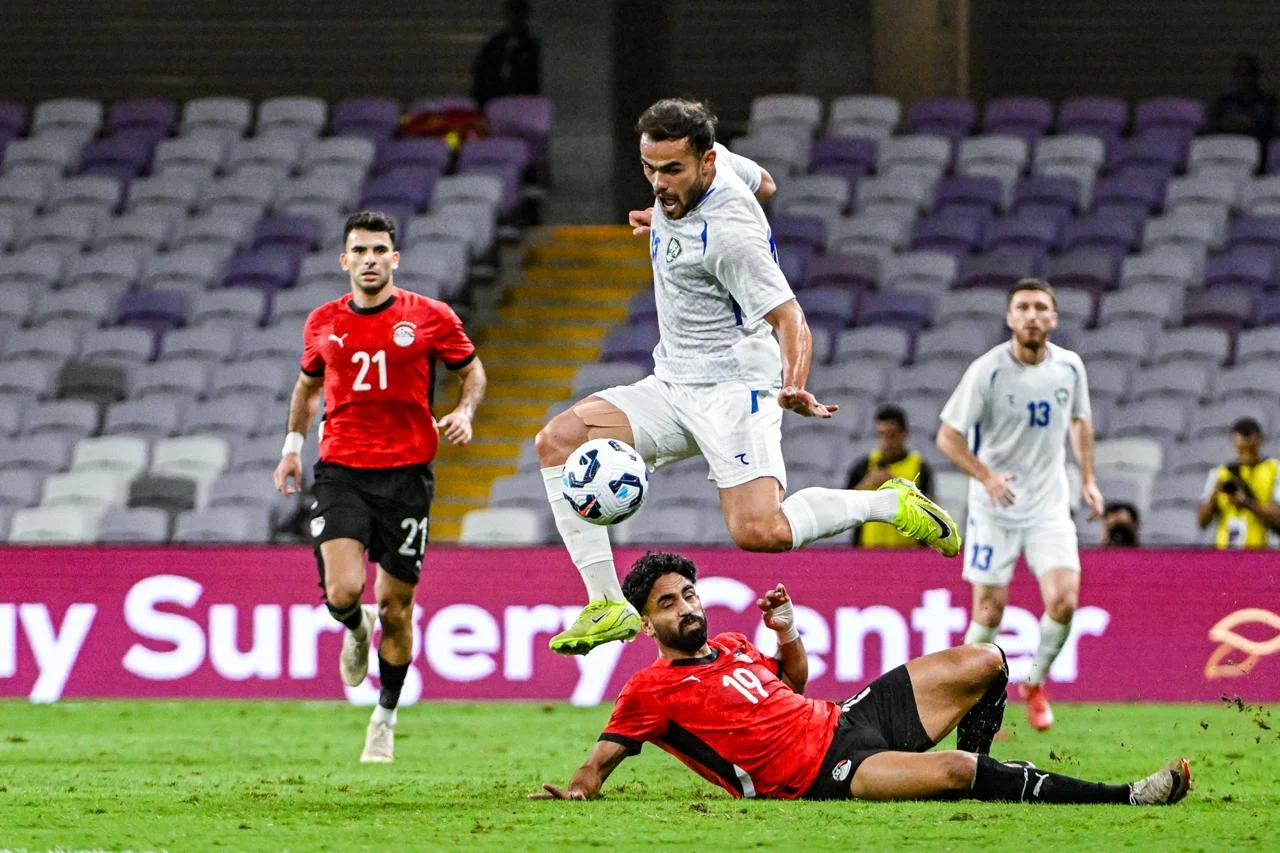
COMPETITION
Different styles and ideas are felt not only in the overall picture, but also in small details. Under Srechko Katanec, the core of the team had already been formed, and it was difficult for new players to join the squad. In the context of national teams, this is a very difficult and ineffective path. The reason is that it is very difficult to control the sports form of the leaders once every 2-3 months, when they are gathered for a short period. One player gets injured, another unexpectedly comes to the training camp in poor athletic form - the coach is not always ready for this surprise.
Cannavaro not only tries different options but also makes small changes depending on each new player and opponent. For example, Masharipov and Fayzullayev are currently absent. It's no secret that these two are the most creative players in the squad. But this loss is practically imperceptible. Cannavaro is trying to close this gap with the help of Eldor Shomurodov's experience. Therefore, Erkinov appeared as the main offensive weapon against Kuwait, and in the match against Egypt, Urunov. That is, Shomurodov is being used not as a goalscorer, not as a player who needs to open up to situations, but as a force that initiates and organizes attacks. In a way, it's very similar to Harry Kane's role at Bayern Munich.
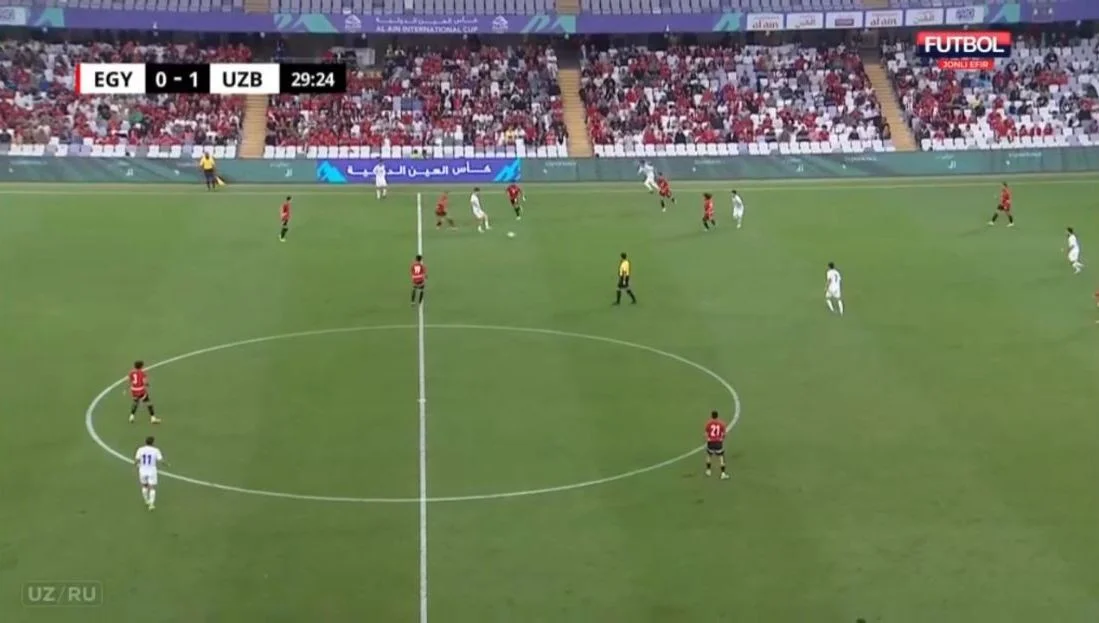
Situations similar to the one in the picture above were repeated many times. Shomurodov received the ball with his back to the opponent's goal and was quite active and effective in organizing attacks in different directions. In addition to the second goal, an extremely dangerous situation, which ended with a header in the second half, was created with the help of an attack started by Shomurodov.
That is, if there are no playmakers like Masharipov and Fayzullayev behind the attack, then we will use Erkinov or Urunov who can break into the penalty area. Shomurodov's role changes.
Such adaptability of the national team will help a lot in the future. Allows the coach to use the best-prepared players at the moment. Reserve options create conditions for changing game tactics. And there is another very important point.
In the national team, there is competition not only between several players for a certain position, but also within different styles. That is, Fayzullayev could be the best for a certain style in the left midfield. But in some other style, Erkinov will be more useful than Abbas. That is, even if Erkinov isn't actually stronger than Abbas, he could be selected for the starting lineup due to competition between styles.
Recently, Jaloliddin Masharipov commented on his injury and said that, God willing, he would be ready for the team's November matches. Then the question arose - why is Masharipov so confident about being called up to the team? Of course, we sincerely want Jaloliddin to recover quickly, become one of the team's leaders again, and play in the World Cup. But the team belongs to everyone. Players need a national team, not a national team. The expansion of the ranks of candidates and the team's ability to play in various styles raise concerns among the players. Now they cannot consider themselves a permanent representative of the team, where to play, they are required to constantly maintain high athletic form and consistently show themselves at the club. This is very important both for the coaching staff and for the player himself.
HORIZONTAL FOOTBALL
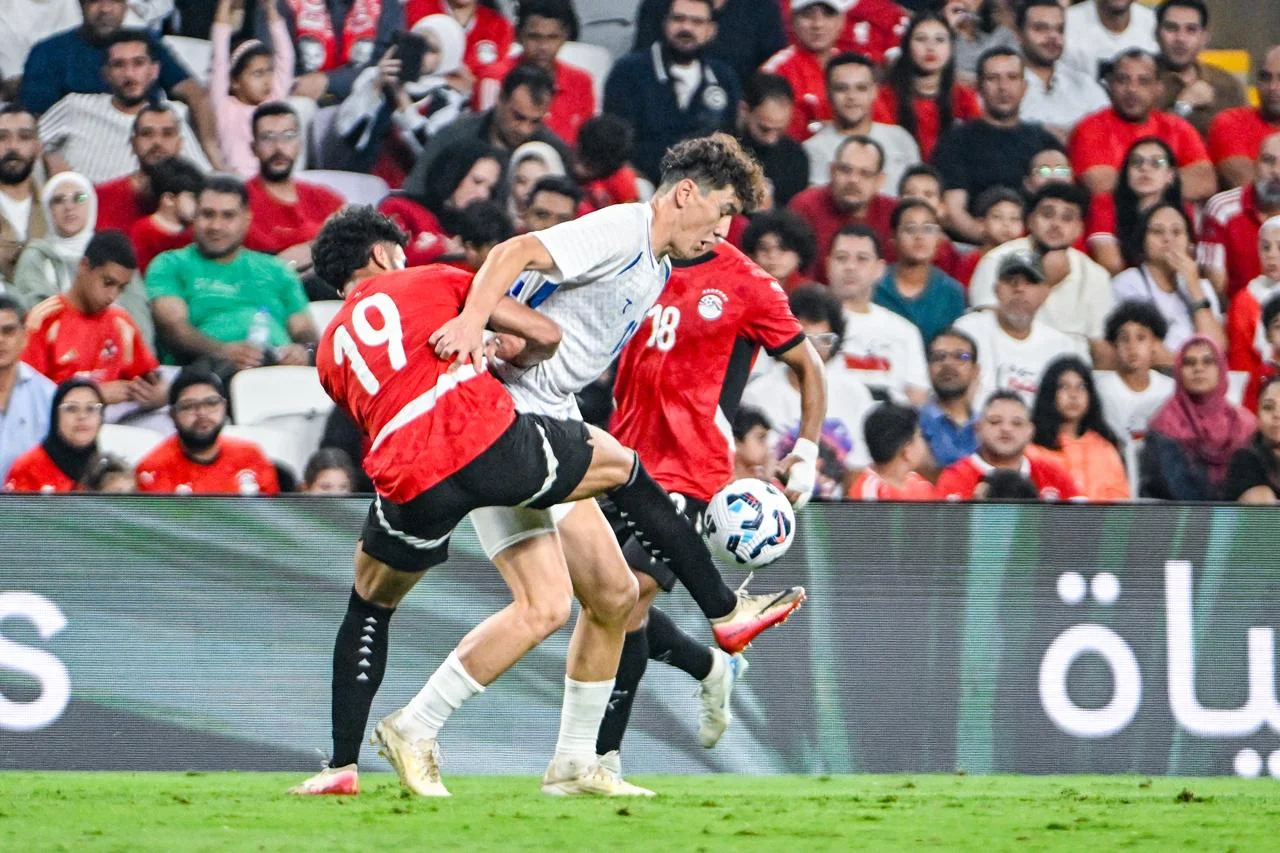
We often use the term vertical game. This is certainly the shortest way to move the ball from defense to attack. At the same time, such a game requires great physical strength and speed from the team.
Fabio Cannavaro must have noticed that there are many technically well-developed players in the team's defense. The match against Egypt reminded me of Thiago Motta's Bologna. That "Bologna" proved that even the width of the field can be used effectively, making a small revolution in Italian football. Of course, under certain conditions, it's difficult to survive in fast-paced England like in Serie A, which is why it remained at the local level. In the Euro 2024 championship, Switzerland, which has three Bologna players, used a similar approach. National team football, which meets five or six times a year, still differs from club football in terms of tempo, where such styles are easier to transfer.
The main aspect is the maximum possible placement of players on the field while controlling the ball. This proves Solskjaer's quote mentioned above - it's very difficult to press against such a team.
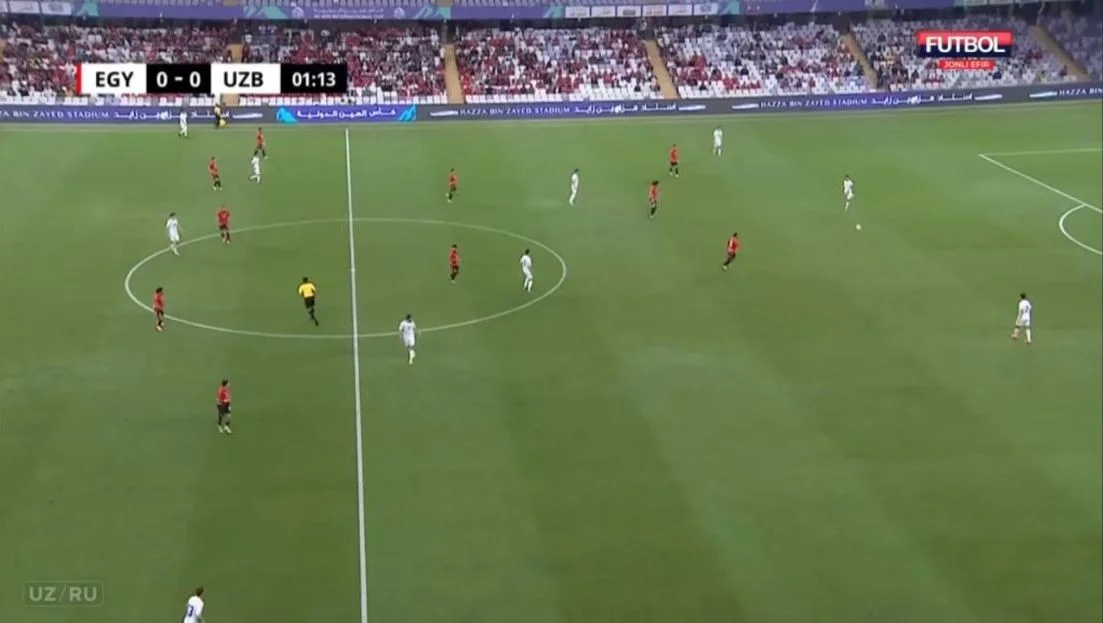
Egypt tried to press in a 5-2-3 formation in most situations, and three forwards played against our three central defenders. In this case, Urunov or Ganiev went down to the center and created a numerical advantage (3 to 2) over the opponent. When one of the Egyptian defenders stepped forward and tried to equalize, Shomurodov joined in. As a result of these contractions, spaces began to appear on the wings for us to attack. That is, 3-4-3 (or 3-5-2) always create inconveniences for personal pressing on the opponent, and when defending by zones, it is always possible to ensure numerical superiority on the wings. Of course, this requires very high physical fitness from wingers.
The more widely we played with the ball, the more densely we moved in defense.
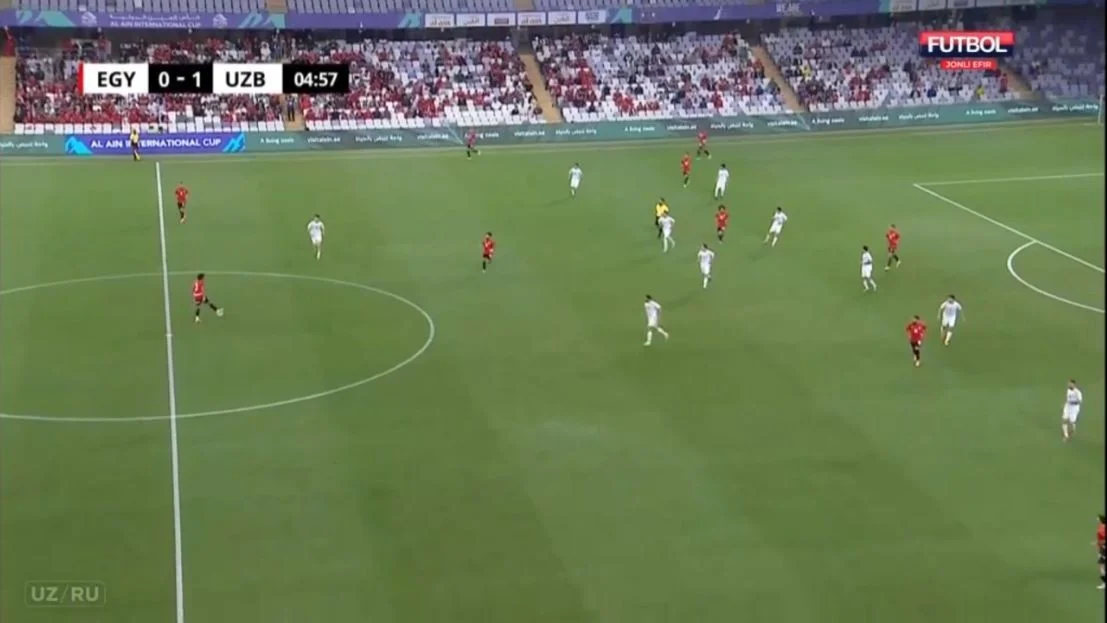
Uzbekistan played 5-4-1 in the lower block and 5-3-2 when pressing. This deprived Egypt of its main advantage - wings. Because our bottom five were constantly moving synchronously to the right and left, there was no opportunity to create situations in Egypt. The farthest player always remained open, and it was always difficult for him to deliver the ball quickly.
PHYSICAL TRAINING IS THE MOST IMPORTANT MATTER
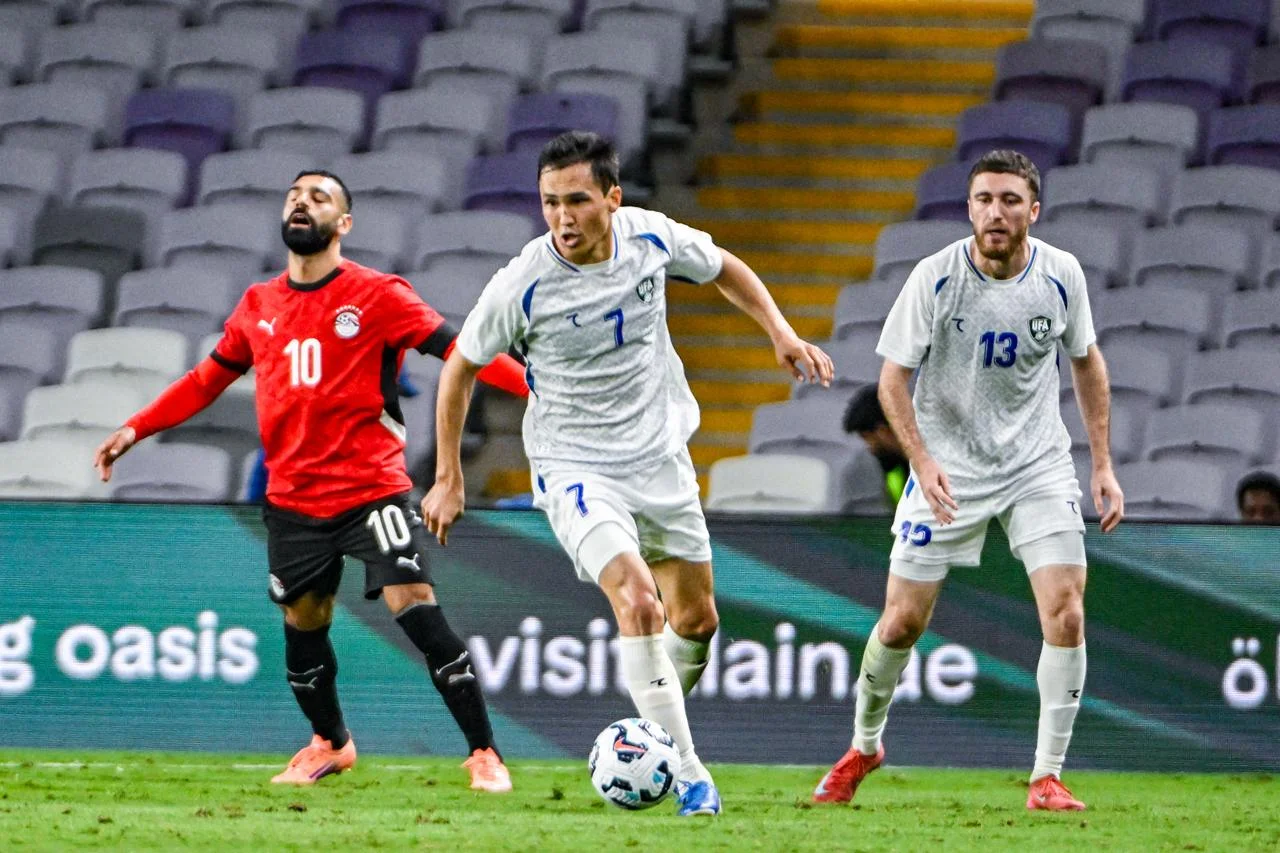
Physical preparation is important so that all plans move to the field, and the aforementioned advantages work constantly, sometimes not against individual opponents. If we look at the small national teams that have successfully played in World Cup history, we see only one common aspect - whether it's African countries or East Asians, they have always managed to bridge the level gap through good physical preparation. Physical conditioning is crucial for disciplined play, the ability to translate coach instructions onto the field, and avoiding mistakes.
Uzbek players played defensively against Egypt both at the beginning of the first half and at the end of the second. But these two pictures differ from each other. In the first section, we were more confident, there was no panic, the plan worked like a clock. In the second section, errors increased, and confusion was noticeable. It seemed that if a goal were conceded, Egypt would definitely increase pressure. This was evident in the match against Uruguay.
After the match, Fabio Cannavaro again addressed this aspect as the main problem. Problems have arisen in our defensive line, there are fewer ideas for a counter-attack, and we're tired because Urunov has been substituted.
Physical deficiency is noticeable in two ways in major competitions. First, in relation to the opponent. Most likely, we will play against teams at a higher level than us in the World Cup. Because the leagues and clubs where opposing players play are of higher quality, they have the ability to play under heavy loads. The matches against Uruguay and Egypt showed that playing 90 minutes against them wouldn't be easy.
Secondly, differences within the same team. Our national team includes players from leading clubs in the Premier League, as well as representatives of the Uzbekistan Super League. Such a discrepancy prevents the team from being equally loaded. Relying on Husanov's pace might be a challenge for the Super League representative. Or conversely, at the pace of the Super League, Husanov might not be able to demonstrate all his potential. Let's say that in the Saudi Arabian team, in the same championship, players with the same skills are gathered - it is easier to form a tempo and style in which they can be used maximally. In teams with a large difference in players, this is a bit difficult.
It's difficult to find an exact solution for Fabio Cannavaro. It's impossible to grow physically during short training camps for the national team. Therefore, he repeatedly emphasizes the need to work with clubs and the importance of intensive football. That is, it will be necessary to develop a system of special loads, additional training, and physical requirements for football players candidates for the national team, thereby monitoring their preparation for national team matches.
There is another positive factor. The World Cup will be held in the summer. At that time, the long season in Europe had just ended, and a decline in the sports form of most players could be observed. The Uzbekistan championship, on the contrary, begins in spring, and by June, it is possible to get into optimal form in all aspects. This, too, may in some respects reduce the difference.
Kakhramon Aslanov
Read “Zamin” on Telegram!Users of Меҳмон are not allowed to comment this publication.







